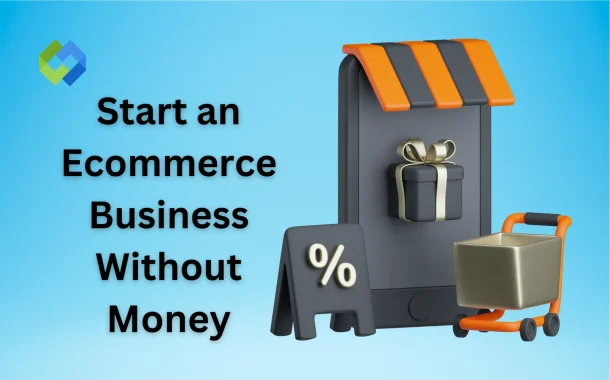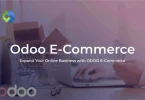Yes, it’s possible to start an e-commerce business without money. You can use free tools to build your online store. You can sell products through dropshipping, which means you don’t need to buy inventory upfront. Social media platforms can help you market your business at no cost.
Table of Contents
Table of Contents
Finding the Right Niche
Finding the right niche is crucial when starting an e-commerce business. A niche is a specific segment of the market where you focus your products and services. Instead of trying to sell everything to everyone, narrowing down to a particular group allows you to target your efforts more effectively. This focused approach makes it easier to stand out in a crowded market. By understanding your niche, you can cater to specific needs and create a more personalized experience for your customers.
To find the right niche, start by identifying gaps in the market. Look for products or services that are in demand but aren’t widely available. This can involve researching current market trends, analyzing customer needs, and exploring areas where competition is low. A niche that is underserved or has unmet needs presents an opportunity for you to step in and offer solutions that others aren’t providing.
Choosing a profitable niche is key to the success of your e-commerce business. It’s important to consider your own interests and passions, as working in a field you enjoy will keep you motivated. However, passion alone isn’t enough; you need to ensure there’s a demand for your products. Conduct thorough research to understand the potential market size, customer behavior, and purchasing trends within your chosen niche.
Building a Business Plan
Building a business plan is a critical step when starting an e-commerce business. It serves as a roadmap that guides your decisions and helps you stay focused on your goals. Whether you’re launching a new brand or planning to start a Shopify store, a well-thought-out business plan outlines your business objectives, strategies, and the steps you’ll take to achieve them. This plan not only helps you stay organized but also makes it easier to secure funding or partnerships if needed.
Start by setting clear goals for your e-commerce business. These goals should be specific, measurable, achievable, relevant, and time-bound (SMART). For example, you might aim to reach a certain number of sales within the first six months or to establish a strong online presence within a year. Clearly defined goals give you a target to work towards and help you track your progress over time.
Next, outline your business strategy. This includes identifying your target audience, understanding their needs, and determining how you’ll reach them. Your strategy should also cover your marketing approach, pricing, and how you plan to stand out from the competition. Additionally, consider the logistics of running your business, such as sourcing products, managing inventory, and handling shipping and returns.
Finally, include a financial plan in your business plan. Even if you’re starting with little to no money, it’s important to project your potential income and expenses. This helps you understand the financial health of your business and plan for growth. Your financial plan should include startup costs, ongoing expense management solutions, revenue projections, and a break-even analysis. By building a comprehensive business plan, you set a strong foundation for your e-commerce business and increase your chances of success.
Using Free Resources
To create your e-commerce store without spending money, start by using free website builders or e-commerce platforms. Options like Shopify (with free trials), WooCommerce (a free WordPress plugin), or Wix (with a free plan) allow you to design a professional store with ease. These platforms provide templates and drag-and-drop features, making it simple to set up your store and add products without technical skills.
Marketing Your Business for Free
Marketing doesn’t have to be expensive. Social media platforms like Facebook, Instagram, and Pinterest offer free tools to reach your audience. By sharing content, engaging with followers, and running promotional campaigns, you can attract customers without any cost. Additionally, cold email software like Mailchimp have free plans that let you send newsletters and promotions to your subscribers.
Managing Your Business with Free Resources
Efficient management is key to a successful e-commerce business. Use free tools like Google Analytics to track website traffic and understand customer behavior. Project management tools like Jotform Boards, Trello or Asana can help you stay organized and manage tasks effectively. These resources allow you to operate your business smoothly while keeping expenses minimal, giving you more room to grow.
Sourcing Products at No Cost
Sourcing products at no cost is a crucial aspect of starting an e-commerce business without significant upfront investment.
1. Dropshipping
Dropshipping is one of the most popular ways to source products without upfront costs. With dropshipping, you partner with suppliers who handle inventory and shipping for you. When a customer places an order on your website, the supplier ships the product directly to them. This means you don’t need to buy inventory in advance or worry about storage, reducing your financial risk.
2. Print-on-Demand
Print-on-demand (POD) is another cost-effective method to source products. With POD, you create custom designs for products like t-shirts, mugs, or phone cases. The product is only printed and shipped when a customer orders it, eliminating the need for inventory. This approach allows you to offer unique items without upfront costs, as the printing and fulfillment are handled by a third-party provider.
3. Affiliate Marketing
Affiliate marketing offers a different approach to sourcing products. Instead of selling your own products, you promote products from other companies on your website. When a customer clicks on your affiliate link and makes a purchase, you earn a commission. This method requires no inventory and allows you to monetize your e-commerce site by partnering with brands that align with your niche.
Creating Your Online Store
Creating your online store is a pivotal step in launching your e-commerce business.
Selecting a Free E-commerce Platform
The first step is to choose a free or low-cost e-commerce platform to host your store. Platforms like WooCommerce (a free WordPress plugin), Big Cartel, or Wix’s free plan offer the essential tools you need to get started. For additional technical guidance, collaborating with a local IT company can help ensure your e-commerce platform is configured securely and optimized for speed and performance from the start. These platforms provide customizable templates that allow you to design a professional-looking store without needing coding skills. You should also search for a Squarespace discount if you prefer a different professional builder.
Setting Up Your Storefront
Once you’ve selected a platform, the next step is setting up your storefront. This involves organizing your product categories, creating product pages, and setting up a navigation menu that makes it easy for customers to find what they’re looking for. Pay attention to the layout and design to ensure it’s visually appealing and intuitive to use. Clear calls-to-action, such as “Buy Now” or “Add to Cart,” are crucial for guiding customers through the purchasing process.
Writing Product Descriptions and Adding Images
Effective product descriptions and high-quality images are essential for converting visitors into customers. Write clear, concise descriptions that highlight the key features and benefits of each product. Use bullet points for easy readability and include relevant keywords to help with search engine optimization (SEO). Additionally, use high-resolution images that show your products from multiple angles. If possible, include lifestyle images that demonstrate the product in use, helping customers visualize how it fits into their lives.
Marketing Your Ecommerce Business
For companies that produce their own goods, integrating ecommerce for manufacturers can also help maximize visibility and reach without significantly increasing marketing costs.
1. Using Social Media
Social media platforms like Facebook, Instagram, and Pinterest are powerful tools for promoting your e-commerce business. These platforms allow you to connect directly with your target audience, share content, and showcase your products. Create engaging posts, stories, and videos that highlight your products and brand values. Use relevant hashtags to increase visibility and participate in communities related to your niche. Consistent interaction with your followers can build a loyal customer base and drive organic traffic to your store.
2. Content Marketing Strategies
Content marketing is another cost-effective way to market your e-commerce business. Start by creating a blog on your website where you can publish articles related to your products or industry. For example, if you’re selling eco-friendly products, you could write about sustainability tips or product comparisons. This content can help establish your brand as an authority in your niche, improve your search engine rankings, and attract visitors who are interested in your products. Additionally, consider creating video content, tutorials, or how-to guides that showcase your products in action.
3. Email Marketing
Email marketing remains one of the most effective ways to convert potential customers into buyers. Start by building an email list through your website, offering incentives like discounts or exclusive content to encourage sign-ups. Use a free email marketing service like Mailchimp to send regular newsletters, product updates, and promotions. Personalized emails that address customer needs or past purchases can increase engagement and drive repeat sales. Keep your emails concise, visually appealing, and focused on providing value to your subscribers.
Conclusion
Starting an e-commerce business without money is entirely possible with the right approach. By using free tools and resources, you can build, market, and manage your online store without a large investment. Focus on leveraging free website builders, social media platforms, and email marketing to grow your business. Dropshipping, print-on-demand, and affiliate marketing are effective ways to source products without upfront costs.
With careful planning and strategic use of available resources, you can launch and grow your e-commerce business successfully. Stay focused on your goals, keep track of your progress, and adapt as needed.














